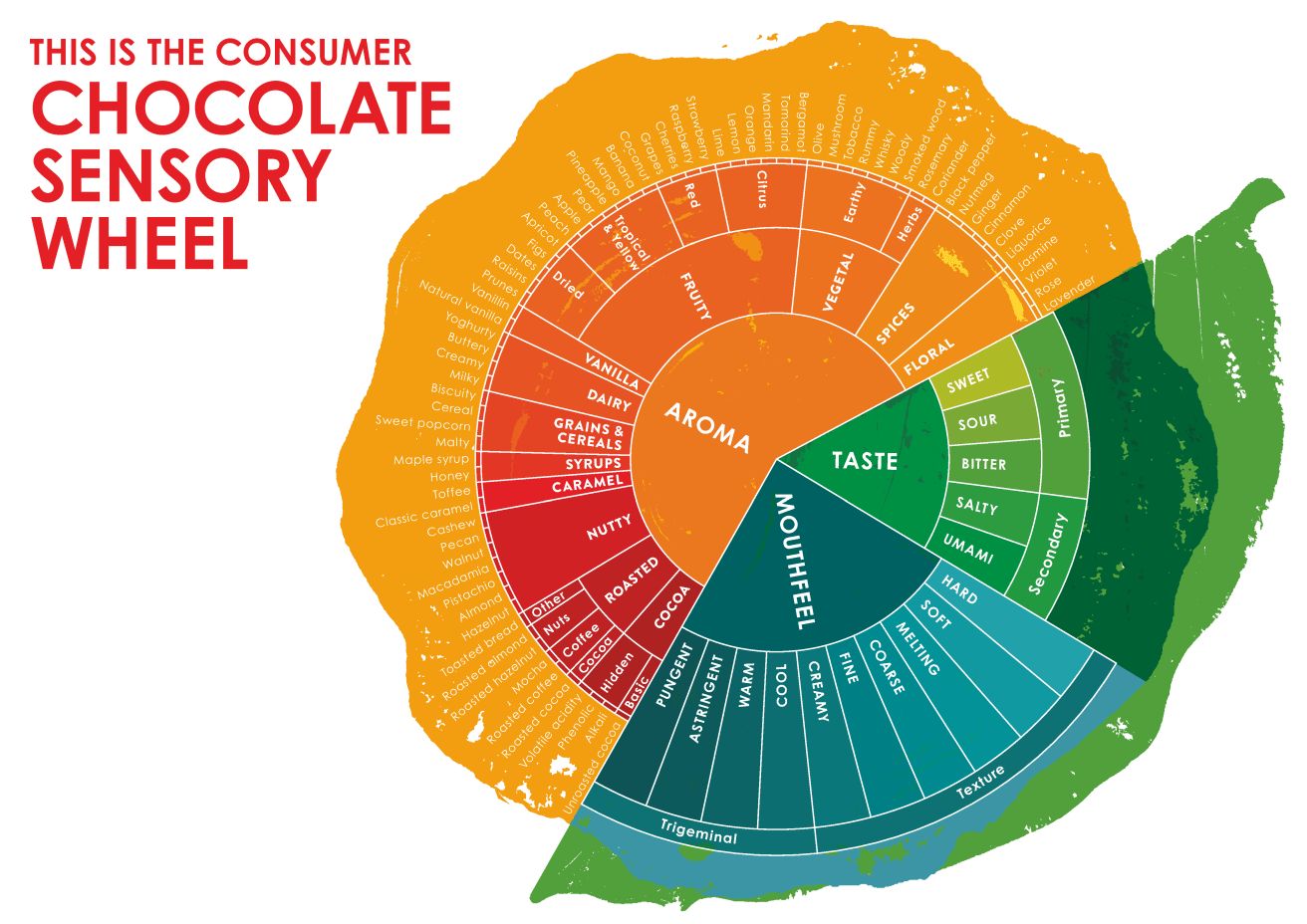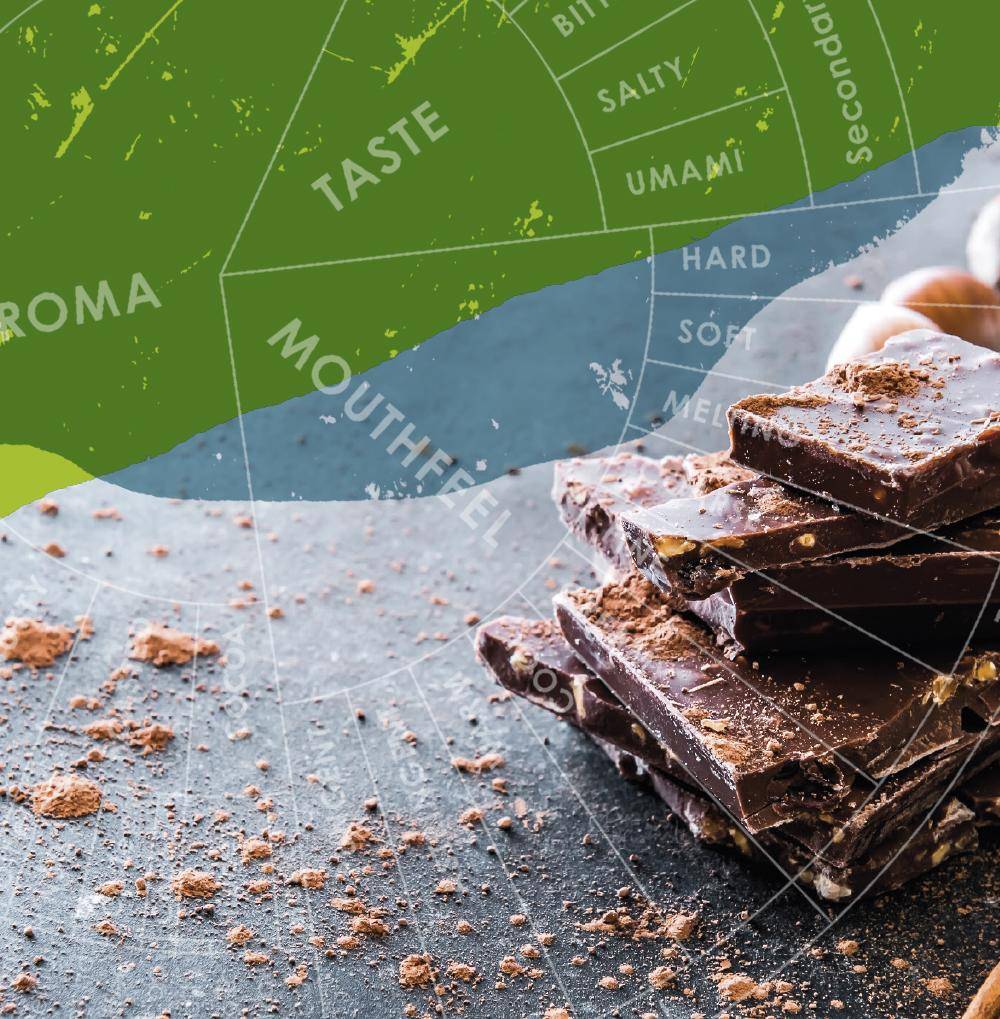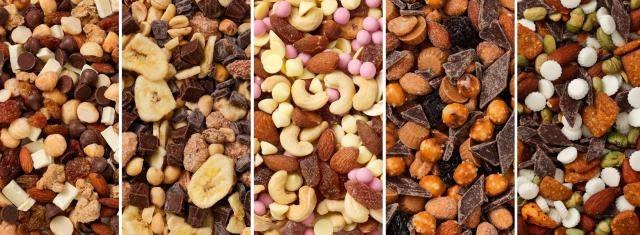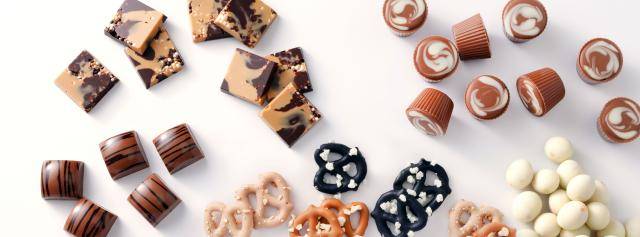Everyone loves chocolate, but how do you describe your chocolate taste experience? How do you find the proper words for a chocolate taste description? How do you give the complexity and richness of chocolate the justice it deserves when talking about taste?
The sensory language in our ‘Consumer Chocolate Sensory Wheel’ is based on a new book ‘Hidden Persuaders in Cocoa & Chocolate - A Flavor Lexicon for Cocoa and Chocolate Sensory Professionals,’ written by our Global R&D Sensory Methodologies Manager Renata Januszewska, with input from Barry Callebaut’s team of chocolate and cocoa scientists and specialists and leading global flavor house Givaudan. It is the first serious attempt rooted in science to create a sensory language for the chocolate industry.
How does it work?
The easy to navigate wheel offers a layered overview of all relevant chocolate and cocoa aromas, taste and mouthfeel.
- The first inner layer covers 5 basic taste descriptors, 12 basic aroma descriptors and 10 mouthfeel descriptors.
- The second outer layer goes beyond that to identify and better understand what is meant by vegetal aromas.
The mouthfeel, texture and trigeminal descriptors capture the sensations we experience while tasting chocolate. It covers the attributes perceived with the first bite, during the tasting, when the chocolate is melting in your mouth, and after swallowing the chocolate. We selected 6 texture descriptors most relevant for consumers.
At First Bite:
-
Does it feel hard?
During Tasting:
- Does it feel soft when chewing and moving?
-
What about the melting in the mouth?
-
And does it feel coarse, fine and creamy when melting?
- What about the melting in the mouth?
- And does it feel coarse, fine and creamy when melting?

Depending on the chocolate type, you would need 7 - 9 descriptors from the first inner layer of the wheel to get a clear picture of the taste experience of a chocolate. So how to describe chocolate?
For white chocolate it’s 7 descriptors:
- Taste: sweetness
- Aroma: dairy; milky/buttery, vanilla, caramel
- Mouthfeel: creamy, melting
For milk chocolates - 8 descriptors:
- Taste: sweetness
- Aroma: dairy; milky/buttery, vanilla, caramel, cocoa
- Mouthfeel: creamy, melting.
For dark chocolates - 9 descriptors:
- Taste: sweetness, sourness, bitterness
- Aroma: cocoa, roasted, fruity
- Mouthfeel: creamy, melting, astringent
For some single origin chocolates, fruity, vegetal, spicy and floral notes will become more prominent and important. For ruby chocolate, sourness and red berry notes will become more prominent.
With chocolate sensory language we can describe chocolate and cocoa experiences much more in detail, like wine and coffee lovers already do. Seeing all the richness of chocolate taste, chocolate lovers and chocolate tasters around the world will appreciate it even more!



